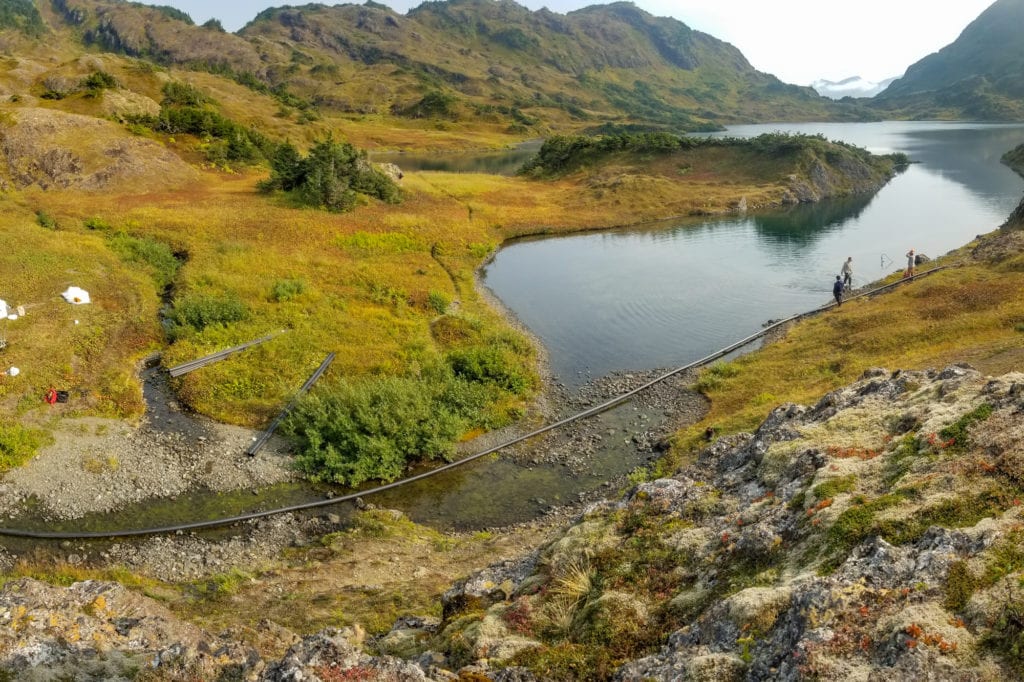
A week into spring, Cordovans are still wading through ankle-deep slush and the possibility of a water shortage seems remote. However, even following a snowy winter, an unexpectedly dry summer can still create a water shortage. This is what happened in 2019, when a water crisis forced the city to pump millions of gallons from Eyak Lake.
“When your water comes from open water sources that are fed by the watershed, and it’s not raining and the snow’s gone, you’ve got a water issue,” Public Works Director Samantha Greenwood said. “It’s this game of rain, snow, how many fish are caught — we’ve seen more than 3 million gallons a day go out the door.”
Crises like these tend to emerge suddenly, Public Works Department officials said. While Cordova’s water use currently sits at a modest 700,000 gallons per day, it can rise to 3.4 million gallons per day when canneries are operating at full swing.
August 29, 2019, 700 feet of high-density polyethylene pipe was installed at Crater Lake, which lies roughly 2.5 miles northeast of downtown Cordova. The pipe was helicoptered to the site in two 350-foot sections which were welded together on the ground. By the following morning, the pipe was delivering 400 gallons of water per minute to the Orca Water Treatment Plant. This additional water source allowed Cordova to ride out the crisis until rain arrived. The solution was suggested by Water and Sewer Superintendent Joel Felix.
“It was a challenging operation,” Felix said.
Now, the Department of Public Works hopes to turn this temporary solution into a permanent safeguard against water shortages. By installing a valve and other components, the Crater Lake siphon will be able to supplement Cordova’s water supply on an ongoing basis, Greenwood said. Under normal circumstances, the same amount of water would be used overall, and water levels at Crater Lake would not be dramatically impacted, she said. However, drawing water from an additional source would better allow the city to preserve water levels at Meals Reservoir.
The project would be funded by the city’s 2016 Pink Salmon Disaster Relief Fund allotment, Greenwood said. At an October 14, 2020 meeting, the Cordova Harbor Commission discussed the possibility of assigning half of the roughly $669,000 allotment to harbor repairs and half to the installation of a permanent Crater Lake siphon. Most of the Crater Lake project’s expenses would be incurred in engineering rather than in materials, as the piping, which is provisionally expected to still be usable, is already in place. As there is no electrical supply at Crater Lake, the valve would have to be manually turned on and off by personnel who would hike to the site, Greenwood said.
“It’s so simple and so straightforward that it’s unreal,” Greenwood said. “We don’t have to build a new plant. We don’t have to do an impoundment… All the other water sources under discussion would be huge, huge, huge investments: buildings, pipes, all that stuff.”





